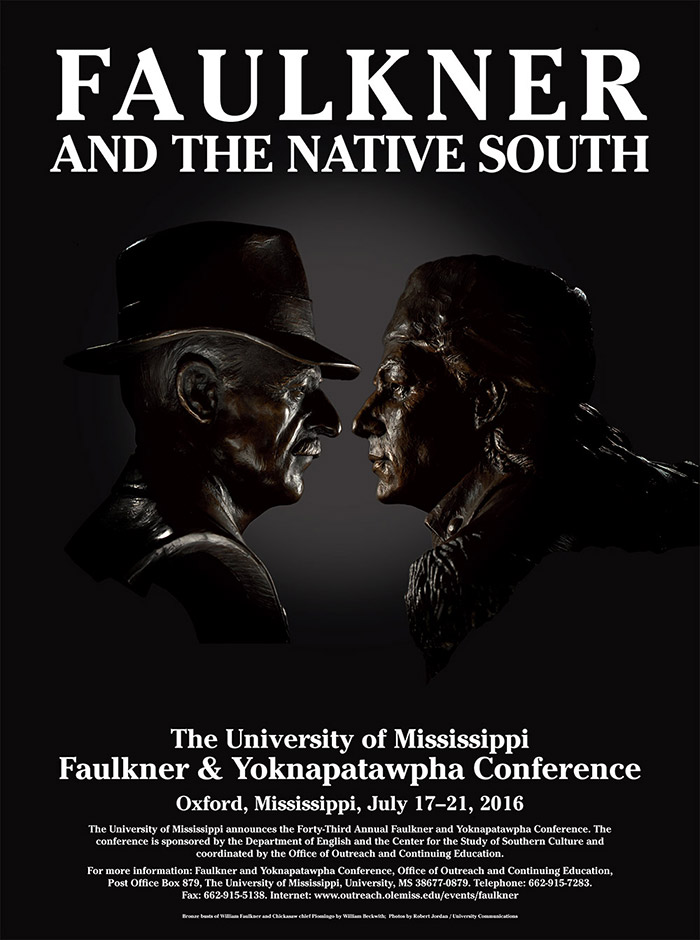
Native Southern Transformations, or, Light in August and Werewolves
Location
Nutt Auditorium
Start Date
18-7-2016 10:30 AM
Description
In the world of Light in August, a cotton warehouse tank can look like the torso of a beheaded mastodon and an elderly couple "might have been two muskoxen strayed from the north pole, or two homeless and belated beasts from beyond the glacial period." Here and elsewhere in the novel, Faulkner's reach transforms characters and environs. While none of the major characters is native to Jefferson, let alone Indigenous, some are astonishingly non-native and most if not all become more non-native and more homeless as the novel unfolds. With these and other unsettlements in mind, I'll read Light in August alongside Mongrels, a native southern werewolf novel by Blackfeet writer Stephen Graham Jones. Tracking the monsters and the mongrel transformations in both novels, I'll also argue for the transformative methodological value of native southern studies.
Relational Format
Conference proceeding
Recommended Citation
Anderson, Eric Gary, "Native Southern Transformations, or, Light in August and Werewolves" (2016). Faulkner and Yoknapatawpha Conference. 7.
https://egrove.olemiss.edu/fy/2016/schedule/7
Native Southern Transformations, or, Light in August and Werewolves
Nutt Auditorium
In the world of Light in August, a cotton warehouse tank can look like the torso of a beheaded mastodon and an elderly couple "might have been two muskoxen strayed from the north pole, or two homeless and belated beasts from beyond the glacial period." Here and elsewhere in the novel, Faulkner's reach transforms characters and environs. While none of the major characters is native to Jefferson, let alone Indigenous, some are astonishingly non-native and most if not all become more non-native and more homeless as the novel unfolds. With these and other unsettlements in mind, I'll read Light in August alongside Mongrels, a native southern werewolf novel by Blackfeet writer Stephen Graham Jones. Tracking the monsters and the mongrel transformations in both novels, I'll also argue for the transformative methodological value of native southern studies.

